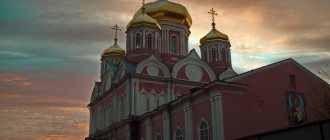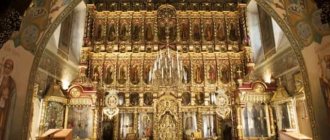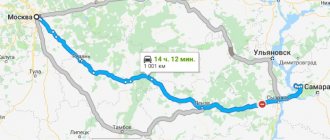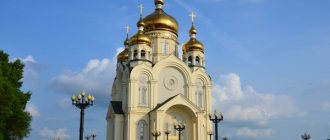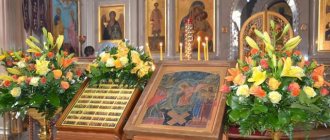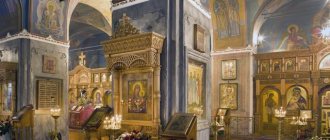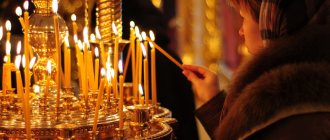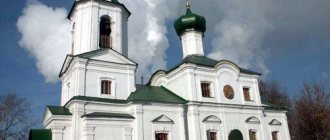Mir
Russia Moscow Sorrow Church on Bolshaya Ordynka (Moscow) Map is loading...
{"format":"leaflet","minzoom":false,"maxzoom":false,"limit":50,"offset":0,"link":"all","sort":[""], "order":[],"headers":"show","mainlabel":"","intro":"","outro":"","searchlabel":"\u2026 \u0441\u043b\u0435\ u0434\u0443\u044e\u0449\u0438\u0435 \u0440\u0435\u0437\u0443\u043b\u044c\u0442\u0430\u0442\u044b","default":"","import-annotation":false,"width ":"auto","height":"350px","centre":{"text":"","title":"""link":"""lat":55.74139000000000265799826593138277530670166015625,"lon": 37.62416999999999944748196867294609546661376953125,"icon":""},"title":"","label":"","icon":"","lines":[],"polygons":[],"circles":[ ],"rectangles":[],"copycoords":false,"static":false,"zoom":8,"defzoom":14,"layers":["OpenStreetMap"],"image layers":[] ,"overlays":[],"resizable":false,"fullscreen":true,"scrollwheelzoom":true,"cluster":false,"clustermaxzoom":9,"clusterzoomonclick":true,"clustermaxradius":80, "clusterspiderfy":true,"geojson":"","clicktarget":"","showtitle":true,"hidenamespace":false,"template":"","userparam":"","activeicon": "","pagelabel":false,"ajaxcoordproperty":"","ajaxquery":"","locations":[{"text":"\u003Cb\u003E\u003Ca href=\"/palomnik/%D0% A1%D0%BA%D0%BE%D1%80%D0%B1%D1%8F%D1%89%D0%B5%D0%BD%D1%81%D0%BA%D0%B0%D1%8F_% D1%86%D0%B5%D1%80%D0%BA%D0%BE%D0%B2%D1%8C_%D0%BD%D0%B0_%D0%91%D0%BE%D0%BB%D1% 8C%D1%88%D0%BE%D0%B9_%D0%9E%D1%80%D0%B4%D1%8B%D0%BD%D0%BA%D0%B5_(%D0%9C%D0%BE %D1%81%D0%BA%D0%B2%D0%B0)\» title=\»\u0421\u043a\u043e\u0440\u0431\u044f\u0449\u0435\u043d\u0441\u043a\u0430\u044f\ u0446\u0435\u0440\u043a\u043e\u0432\u044c \u043d\u0430 \u0411\u043e\u043b\u044c\u0448\u043e\u0439 \u041e\u0440\u0434\u044b\u 043d\u043a\u0435 (\u041c\u043e \u0441\u043a\u0432\u0430)\»\u003E\u0421\u043a\u043e\u0440\u0431\u044f\u0449\u0435\u043d\u0441\u043a\u0430\u044f \u0446\u043 5\u0440\u043a\u043e\ u0432\u044c \u043d\u0430 \u0411\u043e\u043b\u044c\u0448\u043e\u0439 \u041e\u0440\u0434\u044b\u043d\u043a\u0435 (\u041c\u043e\ u0441\u043a\u0432\u0430)\ u003C/a\u003E\u003C/b\u003E\u003Chr /\u003E\u003Ca href=\»/palomnik/%D0%A1%D0%B2%D0%BE%D0%B9%D1%81%D1%82% D0%B2%D0%BE:%D0%90%D0%BD%D0%BD%D0%BE%D1%82%D0%B0%D1%86%D0%B8%D1%8F\» title=\» \u0421\u0432\u043e\u0439\u0441\u0442\u0432\u043e:\u0410\u043d\u043d\u043e\u0442\u0430\u0446\u0438\u044f\»\u003E\u0410\u043d \u043d\u043e\u0442\ u0430\u0446\u0438\u044f\u003C/a\u003E: »'\u0425\u0440\u0430\u043c \u0438\u043a\u043e\u043d\u044b \u0411\u043e\u0436\u0438\u0 435\u0439\u041c\u0430 \u0442\u0435\u0440\u0438 \u00ab\u0412\u0441\u0435\u0445 \u0441\u043a\u043e\u0440\u0431\u044f\u0449\u0438\u0445 \u0420\u0430\ u0434\u043e\u0441\u0442\u044c \u00bb"' (\u0421\u043f\u0430\u0441\u0430 \u041f\u0440\u0435\u043e\u0431\u0440\u0430\u0436\u0435\u043d\u0438\u044f) \u2014 \u0 43f\u0440\u0430\u0432 \u043e\u0441\u043b\u0430\u0432\u043d\u0430\u044f \u0446\u0435\u0440\u043a\u043e\u0432\u044c \u0432 \u041c\u043e\u0441\u043a \u0432\u0435 \u043d\u0430 \u0411 \u043e\u043b\u044c\u0448\u043e\u0439 \u041e\u0440\u0434\u044b\u043d\u043a\u0435, \u043e\u0442\u043d\u043e\u0441\u0438\u0442 \u0441\u044f \u043a \u041c\ u043e\u0441\u043a\u0432\u043e\u0440\u0435\u0446\u043a\u043e\u043c\u0443 \u0431\u043b\u0430\u0433\u043e\u0447\u0438\u043d\u04 38\u044e\u041c\u043e\u0441\ u043a\u043e\u0432\u0441\u043a\u043e\u0439 \u0435\u043f\u0430\u0440\u0445\u0438\u0438 \u0420\u0443\u0441\u0441\u043a\u043e\u0 439\u043f\u0440\u0430\u0432\ u043e\u0441\u043b\u0430\u0432\u043d\u043e\u0439 \u0446\u0435\u0440\u043a\u0432\u0438.","title":"\u0421\u043a\u043e\u0440\u0431\u0 44f\u0449\ u0435\u043d\u0441\u043a\u0430\u044f \u0446\u0435\u0440\u043a\u043e\u0432\u044c \u043d\u0430 \u0411\u043e\u043b\u044c\u0448\u 043e\u0439\u041e\u0440\u0434\ u044b\u043d\u043a\u0435 (\u041c\u043e\u0441\u043a\u0432\u0430)","link":"","lat":55.74139000000000265799826593138277530670166015625," lon":37.62416999999999944748196867294609546661376953125,"icon":""}] ,"imageLayers":[]}
55.741495; 37.62448
Russia, Moscow, Bolshaya Ordynka street, 20с10
Moscow
Russia
Phone fax:
+ 7 (495) 951-60-34
Temple of the Icon of the Mother of God “Joy of All Who Sorrow”
(Transfiguration of the Savior) is an Orthodox church in Moscow on Bolshaya Ordynka, belongs to the Moskvoretsky deanery of the Moscow diocese of the Russian Orthodox Church.
History[edit]
The first mention of the temple of St. Varlaam Khutynsky “in Ordyntsy” dates back to the 70s. XVI century In the XIV century. here was the road leading to the Golden Horde. In addition, Russian captives ransomed from the Mongol conquerors were called “Horde”. There is an assumption that the area where the temple stands was given to them to build houses. In 1683-1685. In place of the wooden one, a stone Church of the Transfiguration was built. In 1688, the glorification of the icon of the Mother of God “Joy of All Who Sorrow” kept there, which was especially revered by the persons of the reigning house, took place.
Already in 1713, in the Horde Transfiguration Church, an antimension was issued for the throne in honor of this icon, and in 1770 the chapel was updated with a donation from G. Lyubovnikova - many people joyfully and often donated funds for the improvement of this church.
In 1783, a Zamoskvorechye merchant named Dolgov, who had a house on Bolshaya Ordynka right opposite the church, donated a lot of money for its reconstruction and ordered this work from his famous relative, architect Vasily Bazhenov.
The icons for the iconostasis were painted in 1788 by Hieromonk Boniface from the Sarov Hermitage. The mourning chapel was consecrated on the day of the feast of the temple image, October 24, 1790, by Metropolitan Platon (Levshin).
During the Moscow fire of 1812, the temple was badly damaged and in 1831-1836. was almost rebuilt by the architect O.I. Beauvais, who, however, preserved the surviving fragments of the Bazhenov building. O.I. Bove drew up a drawing of the cast-iron floor slabs that decorated the temple; and images of archangels and St. Nicholas in the iconostasis are by the famous V.L. Borovikovsky.
In September 1836, the new Empire-style rotunda church was re-consecrated to St. Filaret. This is evidenced by the memorial date under the cross of the temple. The miraculous icon “Joy of All Who Sorrow” is located in the left aisle. One beautiful detail, unusual for Moscow churches, is that the candlesticks are located at the top, like small chandeliers, and in order to light a candle, you need to climb portable wooden ladders.
In the early 1930s, the temple was closed, the bells were torn off and destroyed, but the ancient interior was well preserved, since the temple housed the Tretyakov Gallery storeroom and the museum staff tried to do everything to preserve the decoration of this priceless monument of architecture and art. The Church on Bolshaya Ordynka became one of the first Moscow churches opened in the capital after the restoration of the Patriarchate - in 1948. In those years, the day of glorification of the icon, October 24 / November 6, was celebrated with particular solemnity, and every Sunday evening a prayer service was held in the church with the reading of the akathist.
Here the church choir of regent N.V. Matveev was created - at that time the best not only in Moscow, but also in Russia. In the 1960s, his recordings were even released on records by the Moscow Patriarchate. The wonderful choir gave the temple the opportunity to especially celebrate the anniversaries of the death of great people glorified in the history of Russian sacred music. So, on Saturday, closest to the day of death of S.V. Rachmaninov (March 28, 1943), his “All-Night Vigil” was performed in the church, and on the anniversary of the death of P.I. Tchaikovsky (October 25, 1893) his “Liturgy” was performed.
Sights and shrines of the Temple of All Who Sorrow Joy on Bolshaya Ordynka
In Moscow, people do not always come to churches for peace of mind; those who have read the thoughts of brilliant poets or listened to the works of famous composers are also brought here.
with the Church of the Icon of Our Lady “Joy of All Who Sorrow” on Bolshaya Ordynka (in simple terms, the Church of the Joy of All Who Sorrow).
This is if you don’t count the architects who were never able to complete its design..
Contacts. How to get there
- To look for a temple dedicated to the famous icon in Moscow, you need to visit the address: st. Bolshaya Ordynka, 20.
- Phone number for inquiries: +.
Getting there from the Tretyakovskaya metro station is very close.
When planning to visit this religious place, you have to remind yourself that Orthodox shrines are located here.
- Therefore, carefully selected modest clothing is very useful, as is the lack of makeup for women.
- Conversations, telephone, photography are excluded, only silent observation of ongoing services is desirable.
- Since the temple is active, so as not to hurt anyone’s feelings, it is better to come at the beginning of services or between them if you want to listen to the guide’s story.
Schedule of services in the Church of the Icon of the Mother of God “Joy of All Who Sorrow” on Ordynka
On any day of the week you can attend some kind of service or ceremony in the church. Services are held according to the following schedule:
- morning liturgy, 8:00 (Monday - Saturday);
- evening service, 18:00 (Monday - Saturday);
- early liturgy, 7:00, and late liturgy, 10:00 (Sunday, holidays);
- all-night service, 18:00 (Sundays, holidays);
- prayer for healing the eyes at the icon of the centurion Longinus, 11:30 (Thursday);
- funeral vigil service, 18:00 (Friday);
- prayer for healing from drunkenness and drug addiction at the icon “Joy of All Who Sorrow”, 15:30 (Saturday);
- Akathist at the icon “Joy of All Who Sorrow”, 18:00 (Sunday).
As for other rites, they are performed in the church at the request of parishioners, so that baptisms of children, weddings, memorial services and funeral services are constantly held. These ceremonies are ordered regularly, so the temple is always crowded.
Shrines
There are many objects of special veneration in the Church of All Who Sorrow Joy on Bolshaya Ordynka, and they are varied. These include:
- Icon of the Mother of God “Joy of All Who Sorrow.” Since 1688, it has been named after the miraculous, since within the walls of the Church of the Transfiguration there was a healing from a fatal disease. In addition to the Mother of God and the Child, the icon depicts angels, tormented people, saints like Sergius of Radonezh and Varlaam of Khutyn, as well as the Fatherland. Non-Orthodox people are also allowed to pray in front of this icon;
- icon of the martyr Longinus. This Roman centurion, according to the church, was present at both the execution of Christ and his resurrection. Having become a Christian, Longinus testified about the Son of God in Cappadocia, where he was beheaded for this. The blind woman who found his head regained her sight, and since then the image of the centurion Longinus has been asked for victory over eye diseases;
- icon of the Apostle Andrew the First-Called + part of his relics. According to legend, the apostle healed many diseases and founded many churches far from his native land, including in Rus';
- casket with many remains of saints , including John the Baptist, the apostles Peter, Paul and Simon, martyrs Dionysius, Boniface, Tatiana and Natalia, preachers Seraphim of Sarov, Silouan of Athos, Sergius of Radonezh and others. icon of the martyr Boniface
Interesting Facts
- At first, a wooden church of the 16th century stood on the site of the temple. in honor of Varlaam Khutynsky, the stone Transfiguration Church appeared here in 1685.
- Funds for the reconstruction of the church were given in 1783 by its neighbor, the merchant Afanasy Dolgov. Moreover, he gave them not to just anyone, but to a relative, world-famous architect Vasily Bazhenov. His project renovated the temple and belfry in the spirit of classicism, but not completely, but only in the western part.
- The next to start decorating the temple was Osip Bove, who was restoring Moscow after 1812. Money was again donated by Zamoskvorechye merchants, Bove tried to preserve Bazhenov’s style in the construction and added the Empire style to the iconostasis. Like his predecessor, he did not see his creation during his lifetime.
- Unlike other churches, the temple was lucky with its owners in godless Soviet times: the Tretyakov Gallery's reserves were located here. Although the church lost its precious metals, the interior, the structure itself, the floor slabs and the cast iron fence from Bove’s time have survived to this day.
- Already in 1948, divine services were allowed in the temple, and a choir was organized under the direction of Nikolai Matveev (his performances were later replicated on gramophone records).
- A liturgy written by Pyotr Tchaikovsky was performed in the church, which could not be heard in any institution of the Soviet period. This melody has been heard again in this building since 2009, as well as the works of Sergei Rachmaninoff.
- Anna Akhmatova was a regular at the church on Bolshaya Ordynka.
- Loud bells in the 1960s. bothered the writers who lived in the neighborhood, so they were removed for several decades. Now they have taken their original place on the bell tower.
Photo of the temple of the icon “Joy of All Who Sorrow”
The yellowness of the small single-domed church with stucco makes it stand out from a number of new buildings. The three-tiered belfry sounded again, waiting for its vociferous bells.
Interior of the Sorrow Church on Bolshaya Ordynka in Moscow. A unique candlestick in the chapel of Varlaam Khutynsky of the Sorrow Church on Bolshaya Ordynka in Moscow.
Completion of the drum window of the Church of the Icon of the Mother of God of All Who Sorrow on Bolshaya Ordynka in Moscow.
Temple of All Who Sorrow Joy on Bolshaya Ordynka - video
The most respected icon of the temple on Ordynka is “Joy of All Who Sorrow.” However, throughout Russia, temple after temple is dedicated to her.
You look at the unusual shape of the rotunda for Orthodox churches, the strict classical features of the building, and somehow you immediately understand why Akhmatova liked it here and why Rachmaninov’s music has a place here. Some people will like icons for children, others strive to obtain healing from heaven for their loved ones. What purpose could bring you to the Temple of the Joy of All Who Sorrow?
Source: https://www.lifejourney.club/evropa/russia/religion/tserkvi-xramy-sobory/moskvy/vsex-skorbyashhix-radost-na-bolshoj-ordynke.html
Description[edit]
Architecture[edit]
Interior decoration of the temple
The temple building is made in the form of a cylindrical rotunda with Ionic porticoes. The outside is decorated with stucco decoration and medallions. Inside the drum of the hemispherical dome are supported by 12 Ionic columns. The temple has an Empire style iconostasis, the floor is covered with cast iron slabs made according to Beauvais' sketches.
The bell tower has three cylindrical tiers, decreasing in diameter from bottom to top. It is crowned with a dome and a dome with a cross. The northern and southern facades of the refectory are decorated with four-column Ionic porticoes.
The temple is surrounded by a cast-iron fence created at the beginning of the 19th century. Next to it there is a clergy house (mid-18th century) and an almshouse (1764).
Activities of the temple[edit]
On January 3, 2010, Patriarch Kirill gave his blessing to revive the historical name of the Synodal Choir on the basis of the choir group of the Church of the Icon of the Mother of God “Joy of All Who Sorrow.” Work on the revival of the once famous choir throughout Moscow began in the spring of 2009 on the initiative of Metropolitan Hilarion (Alfeev), appointed rector of the Sorrow Church, and Honored Artist of Russia Alexei Puzakov (in the 1980s, A. Puzakov managed the left choir of the Sorrow Church, working under the direction of famous regent Nikolai Matveev). In 2012-2013, the building was restored (architect I. V. Kalugina)
Currently, the church operates a spiritual and educational center, which unites the efforts of the clergy and the parish community in missionary, catechetical, and social work. Currently, the activities of the Center are represented by the following projects: Sunday school for children, a youth club, catechesis courses for adults, the “Old World” service (helping people suffering from one of the forms of addiction and their relatives), as well as a rehabilitation center for victims of non-traditional religions named after . Khomyakova.
Architecture, appearance
Initially, the stone temple was built in the form of a quadrangle, topped with a 5-domed dome, with a refectory and a tent-type belfry. But over time, the building underwent several stages of reconstruction with funds and donations from pious Muscovites.
Among which the most famous are:
- G. Lyubovnikova;
- family of merchants Dolgov;
- sons of merchant Alexei Kumanin;
- titular adviser Semyon Yagodkin;
- merchant Ivan Abazin;
- merchant Ivan Remizov.
A new three-tier bell tower and a spacious refectory in a classical style with 2 internal pillars were built on the western side at the end of the 18th century by the son-in-law of the merchant of the 1st guild Dolgov, the famous Moscow architect Vasily Bazhenov. Subsequently, this project became widespread in the construction of churches in Russia.
The outer walls were decorated with 4 columns with Greek porticoes, the windows were protected with original patterned grilles. The eastern part of the church remained cold. During the reconstruction of the temple after the terrible fire of 1812, a rotunda in the Empire style was erected with an increased height of the central dome on a low drum.
The smooth yellow walls are decorated with white stucco medallions and ornamentation that covers the high frieze and architraves. The author of the project was the famous architect Osip Bove, who treated the historical heritage very carefully and preserved all the surviving elements of the building.
Pilgrim[edit]
Schedule of services:
Daily: Liturgy at 8:00 a.m., Vespers at 6:00 p.m.
On Sundays and holidays: early Liturgy at 7:00 am and late Liturgy at 10:00 am.
Daily: prayer service before the icon of the Mother of God “Joy of All Who Sorrow” after the Liturgy.
Thursday: prayer service at the revered icon of the martyr. Longinus the centurion at 11:30 a.m.
Saturday: prayer service for martyr. Boniface at 15:30
Sunday: Vespers with an akathist to the Most Holy Theotokos before the miraculous icon “Joy of All Who Sorrow” at 18:00.
Schedule of services for the month
Interior decoration
The Church of All Who Sorrow Joy on Ordynka has unique historical interiors. The cast-iron floor with a relief pattern, made according to Bove's sketches, subtly harmonizes with the preserved carved iconostasis and skillful candlesticks.
The painting of the frescoes, as well as the iconostases with icons, were done at different times by skilled craftsmen and famous artists. The warm western part of the temple is decorated with gilded iconostases, the walls and pillars of the interior are decorated with gilded frames with paintings of biblical scenes.
The ceiling vault rises on 12 columns of the Ionic style, repeating the external order. The transition to the summer part is decorated with architectural white marble details with round staircases made of white marble leading to icons, which are supported by sculptures of a pair of angels on both sides.
The area in front of each icon is fenced with an artistic bronze gilded lattice. The opening is designed in the form of a wide arch. The temple frescoes contain motifs atypical for Orthodox churches and are made using the grisaille technique.
Veneration of the Mother of God
Christians' veneration of the Mother of God began during her earthly life. At the same time, the Apostle Luke painted Her first icon, now known as the Tikhvin Icon. The first Christians, persecuted by the pagan authorities, performed divine services in special rooms of ordinary houses and in catacombs (underground galleries). From the 4th century, under Emperor Constantine, persecution ceased, and the construction of temples began. Among the ancient churches (mid-5th century) associated with the name of the Mother of God is Blachernae. Its name comes from the suburb of Blachernae, located near Constantinople.
According to legend, the Tikhvin icon was transferred from Jerusalem to the specially built Blachernae Church under Empress Evdokia. In 473, the Robe of the Virgin Mary was brought from the Holy Land to Constantinople and placed in the temple. Since the end of the 5th century, the Blachernae Church was considered the center of Byzantine veneration of the Mother of God.
Often Christian churches were erected in places where miraculous images of the Mother of God appeared. It should be noted that churches consecrated in the name of icons are dedicated not to the picturesque images themselves, but to their prototype, the Most Holy Theotokos.
“The Good King, the Good Mother, the Queen of Heaven, as a sign of love for the inhabitants of the earth, left Her icons on earth, through which she reveals innumerable mercies and exudes currents of miracles of Her goodness to all who resort to Her with faith and reverence. We must honor Her according to her dignity as the Mother of God and as our Heavenly Mother; The Lord called all those who believe in Him His brothers (Matthew 12:50; Luke 8:21), therefore, all Christians, by the grace of God, are children of the Mother of God. And She cares for Her children and prays for them, taking the most active part in the fate of every Christian from his very birth to the last days of his life” (Archimandrite Kirill Pavlov, 1919-2017).
Hotels in the area
Next to the temple on Pyatnitskaya street, building 20, building 2, there is a small cozy hotel Merry Poppins, where you can comfortably stay in a standard double room at a price of 4.5 thousand rubles. The hotel offers luggage storage, ticket booking and transfer services. Guests can enjoy a hearty continental breakfast each morning.
All rooms have a private bathroom with free toiletries, hairdryer, bathrobe and slippers. The room has a kitchenette with a coffee maker, minibar, and refrigerator. There is a modern TV with cable channels, air conditioning, ironing facilities.
You can stay in the small guest house Rooms 3 Penguins on Pyatnitskaya 20 , with its own tour desk, 24-hour reception and free internet. Guests have access to a common lounge area with TV, an equipped kitchen, a laundry room and a bathroom on the same floor. The cost of placement is from 2.3 thousand rubles. per person.
Economy class business hotel Apartment on Kuzne is also located on Pyatnitskaya 20, b2. The rooms are decorated in Japanese style, equipped with a coffee maker or electric kettle, and the necessary kitchen utensils and utensils. There is free parking. A small double room can be rented for 2.7 thousand rubles.
The Orthodox Church, known under the name “Joy of All Who Sorrow” on Ordynka, leaves most tourists and visitors with unusually strong impressions of its exquisite beauty and richness of interior decoration.
Its marble sculptures and decoration are atypical for Rus', and at the same time attracts pilgrims from all over the country with its miraculous Shrines, and music lovers with the extraordinary church chants of the synodal choir and services with the performance of great classical works.
How to get there by car, public transport
The most convenient way to visit the Church of All Who Sorrow Joy on Ordynka is by taking public transport of the Moscow metro to the Tretyakovskaya station, which is located across the road at a distance of less than 100 m from the entrance to the church fence. You can take bus number 5 to the stop of the same name. Tram number 3 also stops here
From the Novokuznetskaya metro station you will have to walk a little longer, along Klementovsky Lane, about 5-7 minutes. you will have to spend to cover a distance of no more than 400 m. From Polyanka station you can walk on foot through Staromonetny Lane, and then walk along Pyzhevsky or Bolshoi Tolmachevsky Lane to Bolshaya Ordynka. Travel time takes about 12-13 minutes.
The most convenient way to travel by private car is from the Moscow Ring Road:
- along the Enthusiasts Highway;
- further along Sergius of Radonezh Street;
- then along Nikoloyamskaya Street;
- then cross a small section of Yauzskaya Street to the intersection with Yauzsky Boulevard and turn left;
- drive along Sadovnicheskaya Embankment, then along Lubochny Lane to Bolshaya Ordynka, where you need to turn left and proceed straight to your destination.
Contacts
The Church of All Who Sorrow Joy is located in Moscow on Bolshaya Ordynka Street, building 20. The temple has its own website on the Internet, which can be found at ordynka_com, which contains a schedule of services, detailed information and news of parish life.
The temple actively maintains and regularly updates news on its own page on social networks:
- www_facebook_com/ordynka/;
- www_instagram_com/ordynka_com/;
- vk_com/ordynkamolod.
You can also clarify all your questions by calling: 8-495-951-60-34 and 8-495-951-52-20 or write by email to E-mail: [email protected] _com.
